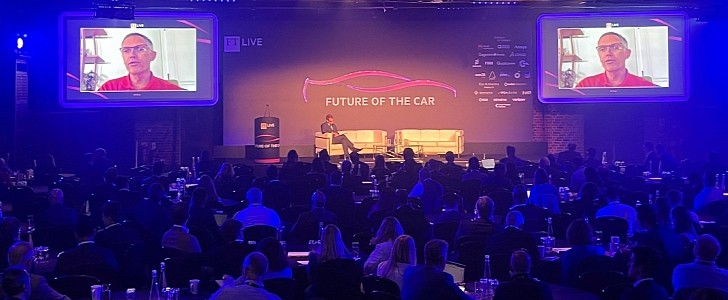The automotive industry is experiencing a rapid shift from combustion engines to fully electric vehicles. Environmentalists and governments are pushing for clean energy and sustainability, but at what cost? Carlos Tavares, head of Stellantis, brought to light a key aspect in the automotive industry’s monumental transition into the future: vision.
The fully electric vehicle market has some visible teething problems, with the most pressing being the scarcity of raw materials and batteries. As it is, leading EV brands like Tesla are pushing unit prices higher to cushion the skyrocketing manufacturing cost.
During FT Future of the Car 2022 conference, Stellantis head Carlos Tavares disclosed that he anticipates the automotive industry could suffer from supply problems with batteries in 2025 and 2026, Reuters reported.
If the industry evades the shortage, then there would be a significant dependence on western and Asian countries, he added. His statement comes when China is harnessing all its resources to turn the country into one of the leading producers of electric vehicles and components.
According to figures published by the China Passenger Car Association (CPCA), the Asian state is leading in the race for world dominance in the electric vehicle market. In 2021, the Asians dominated the global EV market with 53% global sales.
The CEO of the fourth largest automaker also warned that raw materials supply could also pose structural challenges in the future since EVs are about 500 kilos (1,102 pounds) heavier than the outgoing ICE vehicles. As a result, manufacturers will need more material which leads to scarcity and eventually geopolitical risks.
Automakers are channeling all their resources on dumping more EVs in the market with little concern over infrastructure and raw materials. In the UK, lobby group SMMT (Society of Motor Manufacturers and Traders) has already cited disparity over charging points distribution across the region.
In the U.S., protestors are up in arms citing environmental concerns over an EV brand building a manufacturing plant over a clean water reserve serving residents in Georgia. As Carlos Tavares warns, these are issues regulators and automakers are not looking into.
During FT Future of the Car 2022 conference, Stellantis head Carlos Tavares disclosed that he anticipates the automotive industry could suffer from supply problems with batteries in 2025 and 2026, Reuters reported.
If the industry evades the shortage, then there would be a significant dependence on western and Asian countries, he added. His statement comes when China is harnessing all its resources to turn the country into one of the leading producers of electric vehicles and components.
According to figures published by the China Passenger Car Association (CPCA), the Asian state is leading in the race for world dominance in the electric vehicle market. In 2021, the Asians dominated the global EV market with 53% global sales.
The CEO of the fourth largest automaker also warned that raw materials supply could also pose structural challenges in the future since EVs are about 500 kilos (1,102 pounds) heavier than the outgoing ICE vehicles. As a result, manufacturers will need more material which leads to scarcity and eventually geopolitical risks.
Automakers are channeling all their resources on dumping more EVs in the market with little concern over infrastructure and raw materials. In the UK, lobby group SMMT (Society of Motor Manufacturers and Traders) has already cited disparity over charging points distribution across the region.
In the U.S., protestors are up in arms citing environmental concerns over an EV brand building a manufacturing plant over a clean water reserve serving residents in Georgia. As Carlos Tavares warns, these are issues regulators and automakers are not looking into.









